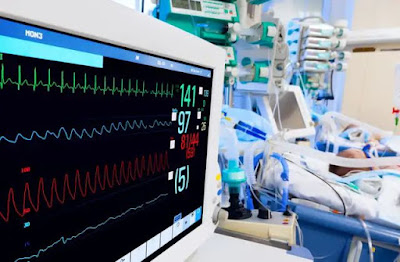Simply speaking, blood oxygen saturation is how much oxygen in the blood. Generally, the oxygen ratio of the human body is about 90%. The higher the oxygen in the blood, the better the human metabolism. Too low spo2 will cause insufficient oxygen supply to the body. Because all cells in the human body need oxygen, abnormal blood oxygen levels will affect most of the body's functions. Therefore, It is a routine measurement in the hospital, such as internal medicine, surgery, and intensive care units.
The doctors can detect early hypoxemia detection in time with continuous spo2 level monitoring. Spo2 measurement is reliable for clinical rescue and nursing. Blood oxygen detection can also find the lesions of many other diseases. It is difficult for an ordinary person to connect the symptoms of dizziness with blood oxygen saturation.
How to monitor blood oxygen saturation?
A professional spo2 monitor is usually expensive. So, in daily life, It is better to wear some devices with spo2 sensor, which can detect our spo2. The wearable devices with medical testing functions are more convenient to use, and the test results are also very accurate and practical. Technically, it also adopts multi-light source fusion technology, which solves the difficulty of wrist blood oxygen measurement, and is useful for daily blood oxygen saturation monitoring.
If there are abnormal blood oxygen levels, it is better to go to the hospital for further testing. At the same time, you can also consult a professional doctor to give a reasonable corresponding treatment plan.
So, who needs daily blood oxygen testing?
1, Obese people, severe snorers, and long-term smokers are prone to insufficient oxygen supply due to long-term unsmooth breathing.
2, with the growth aging, our cardiopulmonary function will gradually decline, and chronic hypoxia would be inevitable. So, the elder needs to have the spo2 monitoring. The elderly with poor blood oxygen conditions have to strengthen physical exercises and prepare a ventilator in advance. If the home environment does not allow them to have a ventilator, oxygen bags can also be prepared to avoid accidents.
3, Strenuous exercise enthusiasts such as mountaineering enthusiasts, long-distance runners, cross-country sports enthusiasts, extreme sports enthusiasts. During exercise, the oxygen demand will increase. If we can monitor blood oxygen saturation during exercise, undoubtedly, we can accurately assess whether we are hypoxic and ensure the safety of the athletes. And in case of hypoxia, we have to top the exercise and adjust the breathing.
4, High-intensity mental workers include white-collar workers, student groups, etc. These people usually are lack exercise. If they stay up late, they may suffer from hypoxia, which affects work. Long-term hypoxia can also lead to diseases. For these people, if hypoxia occurs, the first step is to strengthen physical exercise. Reasonable exercise will help the spo2 back to the normal level. If hypoxia continues, it is necessary to visit the doctor in time for further inspection.
Thanks to this high-tech era, we have electronic sphygmomanometers, heart rate wristbands, and portable blood oxygen detection devices such as wristbands, which provide more convenient devices for those who need to detect blood oxygen. For those people, who method above, you'd better have one for regular monitoring and visit the doctor in time if a severe symptom happened.
Relate article: About Blood Oxygen Saturation






0 Comments